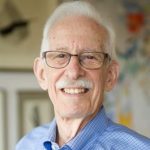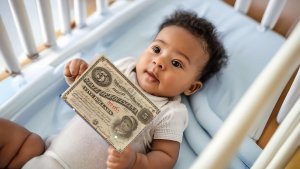Can education stop the country’s backward slide?
In the America of haves and have-nots, fewer folks are “movin’ on up” like George Jefferson of the classic sitcom. In a new paper for the Institute for New Economic Thinking, Peter Temin, MIT economist and economic historian, breaks down how it happened and where we’re headed with a powerful model first used by West Indian economist W. Arthur Lewis, the only person of African descent to win a Nobel Prize in economics. Dual economies are common in less developed countries, but Temin argues that America has now diverged into a top thirty percent, where children receive excellent educations and grow up to work in sectors like finance, technology and electronics industries (FTE)— and then there’s the rest, the low-wage folks who live paycheck to paycheck and whose kids have little hope of joining the lucky ones at the top. Temin explains what drives the dual economy, what race has to do with it, how children are hurt, and why our political system can’t seem to fix anything.
Lynn Parramore: Back when Sir Arthur Lewis talked about the dual economy, he was looking at developing countries where rural people initially serve as a reservoir of cheap labor for people in the cities. Why apply this model to an advanced country like the U.S.?
Peter Temin: For a long time I’ve been concerned with growing inequality. At the same time I’ve seen more problems with education and the condition of infrastructure around the country. I used to see these as separate problems and kind of joked that we’re becoming a less developed country. Suddenly, I realized that Lewis’s model described all of these things as aspects of a single underlying model of the economy.
The Lewis model is very intuitive. It ties together this sense of inequality at the top of the income distribution and wage stagnation at the low end. You start thinking, how are the sizes of the two sectors limited? How do you transition between them?
LP: When did this dual economy take off and what contributed to its creation?
PT: I think it began in the 1970s and 80s and I trace it back to Nixon, and then Reagan who pushed it further. You had people opposed to the New Deal and to the growth of Civil Rights. It wasn’t so much new aims but rather getting more power and being able to advance these aims by various routes that were discovered and exploited in the 1970s and 80s.
LP: Is moving from the low-wage part of the economy to the other, better-paid part just a choice somebody makes?
PT: The key decision that you or your parents make is to get an education — critically, a college education. That is important for two reasons: knowledge and what economists call “social capital,” which might be even more important. Social capital comes during college when you learn new ways of interacting, how to choose who you can trust and how to convey to other people that they can trust you. It’s the kind of lubrication that lets the FTE economy operate. We don’t have a class or major in this. It’s part of what happens in the whole process of education that enables people to move from one sector of the economy to the other.
LP: So it’s not only what goes on in the classroom, but what’s happening outside in the hallways and the social gatherings and the networking that really makes the difference?
PT: Exactly.
LP: You’ve noted that race plays a role that is often overlooked. What are we missing? How do racial biases relate to economic circumstances?
PT: I think a lot of the language of political discussion is tinged with the overtones of race and with the residue of the long history of the long history of America, starting with slavery and continuing with reconstruction and then Jim Crow and then finally the Civil Rights Movement and law changes of the 1960s. Today the discussion isn’t overtly racist but it has the aspect of race in it. Take the Affordable Care Act — almost all the states that refused to expand Medicaid even though the federal government would pay for most of it were Confederate states.
Nobody said, “Oh, the Confederacy will rise again.” But the association doesn’t seem to be accidental. The whole concern for more states’ rights is at least in part an attempt to let states with a troubled racial history go their own way. But since it’s not considered polite to use the terms of race today, these connections are rather underground in the political environment. That’s another reason why political decisions don’t seem to get to the concerns of ordinary people. The use of terms like “Welfare Queen” inflames people and they don’t think clearly. It also distracts from the actual policies that help people in what I call the low-wage sector.
LP: You point out that mass incarceration has had tremendous negative economic impacts on black men and male children. Speaking of the “Welfare Queen” label, can you say a little about the black female experience in the dual economy?
PT: This needs more study because we’re not totally clear what’s happening. But we do know that when the men go to jail, black women become single parents. And if there’s anything we know about the progress of families in the post-war world, it’s that children of single-parent households do badly. That is a major problem. A lot of black women are trying to do the best they can given that the men are in jail, or, if they’ve gotten out of jail, can’t get jobs, can’t live in subsidized housing, and have all of these problems because of public policy. They’re trapped by the system, and even more than that, the children have trouble getting ahead. The children start school with an educational deficit. It’s harder for them to transition into the FTE sector. Some spectacularly intelligent and talented people do, but the numbers are still small.
LP: You’ve stressed the decline of public funding for education and infrastructure that comes with this dual economy. Do you see prospects for a reversal?
PT: The politics of this is very difficult because the Supreme Court has enabled the top of the FTE sector to have a disproportionate influence on the political decisions through its rulings on campaign finance and related issues. So we’re not dealing with the root problems of the dual economy. Current politics is not very responsive to the needs of the citizens.
LP: Would you say that public policy is not only creating a dual economy for the present, but also locking it in for future generations?
PT: Alas, that is an implication of what I’m saying. Yes.
LP: If we continue on the path of the dual economy, will members of the affluent FTE sector do damage to their own interests?
PT: My sense is that we need to first think about the dispersion of incomes within the FTE sector and then for the people near or at the top of the FTE structure. Those people feel themselves to be citizens of the world. They can go anywhere, and they will do fine. They did well out of the global financial crisis in 2008, and they think they can survive anything. I don’t think they’ve thought through what will happen to their position in the world economy if the U.S. really does relapse back into being a developing style economy — that it may change the shape of the world economy. Then they may have problems. The people at the lower end of the FTE economy are concerned that technology and globalization will force them down into the low-wage sector. They’re nervous about what’s going to happen to them and their children and that may shade over into politics.
LP: Does having a dual economy prevent the economy as a whole from growing?
PT: We have a measurement problem here. The GDP concept came in the interwar period, when manufacturing was the center, together with agriculture. You could measure the outputs and then compare them with the inputs and see economic growth and growth in productivity.
When the economy gets to be dominated more by services, and that’s very much the pattern of the FTE sector, we don’t know how to measure the output there. We need to have better measurements in order to better know what the concept of growth is that we’re thinking of, and then we can talk about the effects. There are articles in the paper and now some books about the measurement of national income, GDP, and so on. We’re at the beginning of that discussion. They’re beginning to talk at the UN and elsewhere about the human development index and so on — broadening the concept and having a different measure.
LP: What are some things we might do to reunify?
PT: The first step, which a lot of people are taking, is trying to help people in the low-wage economy. You can go tutor students in an urban school and that will help a few students, and that will be a good thing, but it won’t affect the structure of the economy. There are a whole variety of things, minimum wage laws and other political things that you can do which affect conditions in the low-wage economy but won’t change the overall structure. A concerted political effort is required to try to change the nature of the economy. That’s a long struggle. One reason is that the trend toward the dual economy has been going on for a generation and it’s pretty well entrenched. Politically, one would have to have a kind of big movement. One of our candidates, Bernie Sanders, keeps talking about having a revolution. Yet I think that even what he wants to do is smaller than one would need to do to get rid of the dual economy. I’m talking about a big change.
LP: Then is it fair to say that really none of the presidential candidates is proposing anything that would significantly alter the structure of this dual economy as you’ve described it?
PT: I think that’s fair to say, yes. The question of what to do is difficult for the same reason that measuring the output is difficult. The world is changing. We’re not going to go back to some mythical period in the past where everyone was together. The post-war growth left African Americans out of it, left women out of it in large part. So it wasn’t quite such an inclusive period. Looking backwards is not terribly useful. Technology has changed. The world economy has changed.
If I had to choose one thing to focus it would be education. That’s both because it would help determine how people could move from the lower sector to the upper sector, and also because I think very firmly that more education enhances people’s lives. We’ve focused on testing, but the things that happen in sports or art or history are difficult to test, and they’re now being neglected. Here again we have a measurement problem. This then requires a lot more thought, more investigation.








